9 Essential Fire Safety Facilities in Buildings
Fire safety facilities play a critical role in protecting lives and property during a fire. These features not only help prevent fires but also limit their spread and ensure a safe evacuation. Moreover, when combined, they form a comprehensive system that strengthens overall building safety. For that reason, every building must include the following nine essential fire safety facilities.
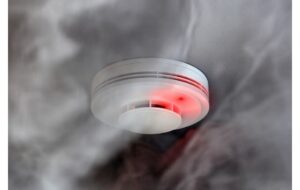
1. Fire Alarms and Smoke Detectors
First and foremost, fire alarms and smoke detectors are one of the fire safety facilities and serve as the earliest warning system in a fire emergency. They immediately alert occupants when they detect smoke or fire, giving people more time to escape safely. Additionally, early detection allows emergency services to respond faster and reduce fire damage. Therefore, you should install alarms in hallways, kitchens, and electrical rooms, while smoke detectors must cover all key areas.
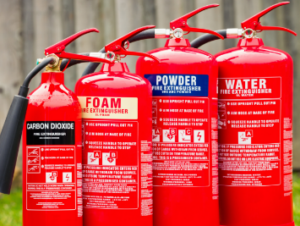
2. Fire Extinguishers
Fire extinguishers allow occupants to control small fires before they spread. They come in different types, each designed for specific fire classes like electrical (Class C), grease (Class K), or combustible materials (Class A). Consequently, it’s important to match the extinguisher type with the risks in that area. Also, routine checks and proper staff training ensure the extinguishers remain functional and effective during an emergency. This is very important as one of fire safety facilities in every building.
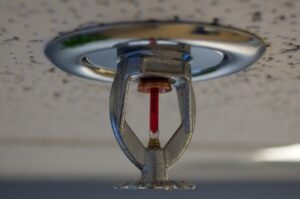
3. Sprinkler Systems
Unlike manual systems, automatic fire sprinkler systems react instantly to heat and release water to control the fire. These fire safety facilities systems activate without human intervention, which helps suppress flames even when no one is nearby. Because of their proven effectiveness, many regulations require them in commercial buildings. Moreover, sprinklers reduce property loss and buy precious time for evacuation and rescue efforts.
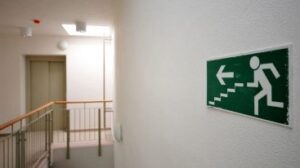
4. Fire Escape Routes and Stairwells
Clearly marked and accessible escape routes are vital for safe evacuation. During a fire, elevators are unsafe, so stairwells become the only option for moving between floors. Hence, stairwells must use fire-resistant materials and remain free of obstacles. In addition, these routes should accommodate people with disabilities by including ramps, wide doors, and non-slip surfaces. Hence,fire escape routes and stairwells must have as one of the fire safety facilities in every building
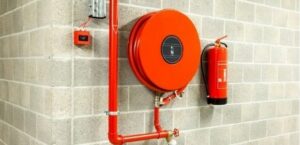
5. Fire Hose Reels
In larger or industrial buildings, fire hose reels serve as a powerful firefighting tool for occupants. They provide a continuous supply of water to control fire outbreaks before firefighters arrive. Besides that, the reels must be visible, functional, and positioned along evacuation paths. Regular inspections guarantee they remain ready for use in any emergency.

6. Fire Safety Signage
Fire safety signage plays an important role in guiding people to safety during stressful situations. These signs indicate emergency exits, fire extinguishers, hose reels, alarm buttons, and first aid kits. Furthermore, signs must remain legible even during low visibility, such as in smoke or power outages. For better visibility, use glow-in-the-dark or illuminated signage to direct people quickly.

7. Fire Blankets
Although fire blankets are small, they provide immediate fire suppression for specific situations. You can use them to smother small kitchen fires or wrap someone whose clothing has caught fire. Because they don’t require special training, anyone can use them with confidence. Keep them in kitchens, workshops, and areas where fire risks are high.

8. Fire-resistant Doors and Materials
Buildings benefit greatly from fire-resistant doors and construction materials. These doors help contain fire within a section of the building, which slows the spread and protects evacuation paths. In addition, materials like fire-rated walls and ceilings extend the amount of time people have to escape. As a result, they reduce casualties and improve structural integrity during a blaze.
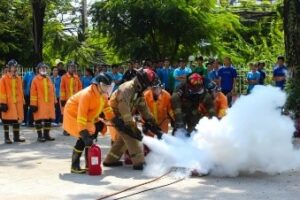
9. Fire Safety Training and Drills
Lastly, proper fire safety training ensures that everyone knows how to act during a fire emergency. Regular drills teach people how to find exits, use extinguishers, and respond calmly. Besides improving response times, training also increases confidence and reduces panic. Therefore, every building management team should organize drills frequently and update safety protocols as needed.
Conclusion
To sum up, fire safety facilities are vital for preserving lives, property, and peace of mind during a fire. From alarms and sprinklers to fire-rated doors and hose reels, each element contributes to a safer environment. More importantly, combining physical systems with fire safety training creates a complete defense strategy. While laws may require these features, building owners also have a moral duty to prioritize fire safety. So, invest in these facilities today to protect your building and everyone inside tomorrow.


